
This form of torture and execution was only abolished in 1905, and as such, graphic photographs exist today of the entire procedure.
Death by a Thousand Cuts
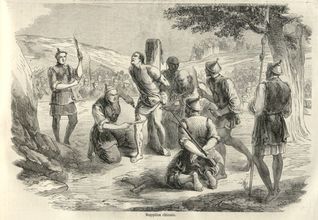 Torture of a French Missionary in China 1858.
Torture of a French Missionary in China 1858. Generally, Lingchi was used to punish crimes of an extreme nature, especially treason, parenticide or mass murder.
Lingchi, Slow Slicing, Death by a Thousand cuts, The Slow Process and The Lingering Death were all names given to this form of execution. The names themselves should hint at what took place.
It was also a form of spiritual punishment, as according to Confucian principles, the condemned, having been taken to pieces as punishment, would not be a 'whole' spirit in the afterlife.
The Process
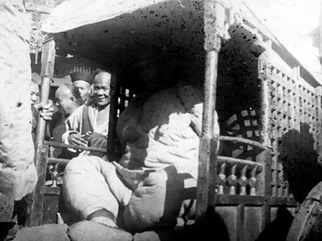 The condemned arrives.
The condemned arrives. The process is not specified in Chinese Law, so the exact procedure will have differed slowly from region to region and executioner to executioner. However, westerners have been witness to several such executions, so the procedure has been detailed from an outside perspective:
The condemned is tied to a post, and although opium has been administered to dull the senses, and prevent an early death through shock, they are more than well aware of what is to come. Arms and legs are bound with the arms tied around the back of the pole. The head is also held up via ropes so the face can be seen through the entire process.
 The breasts have been removed.
The breasts have been removed. The other breast is removed. Parts are placed in a wicker basket at the condemned’s feet. These are followed by the thighs, biceps and the other major muscles found on the limbs.
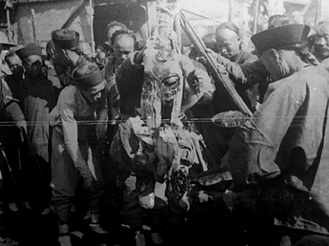 All limbs and the head has been removed.
All limbs and the head has been removed. The torso is then removed from post and placed in the wicker basket with all the other body parts. The ground below the post, and the surrounding area, is saturated with blood.
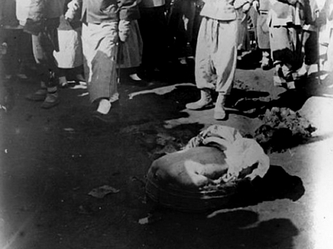 Wicker basket holding the body parts.
Wicker basket holding the body parts. Some records state that in the earlier uses of Lingchi, the condemned’s eyes were removed, so they could not see what was to happen as their face was mutilated (ears, nose and lips removed) as well as their genitalia.
In later Lingchi executions, photographers would be present to chronicle the entire event. But they also served a more macabre purpose... postcards and other mementos were made of the images.
The photos you see for this article come from the execution of Wang Weiqin, which took place in Caishikou, Beijing on 31st October 1904. Wang Weiqin was a former official who had killed two families.
It is not known whether there was a minimum age requirement for a prisoner to receive the sentence, however, French soldiers stationed in Beijing in 1905, photographed the execution of a 'deranged young boy'.
In both these cases the condemned was given respite by having an early penetration of the heart with the remainder of the process taken post mortem.
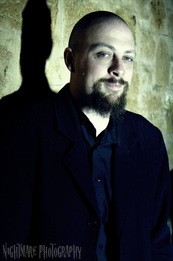




 RSS Feed
RSS Feed
